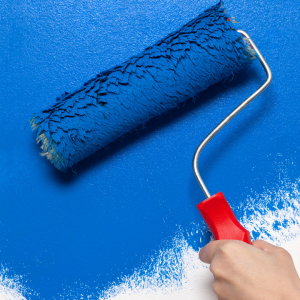Just like food, paints and coatings can spoil during storage as well. Preservatives are needed in paints and coatings to prevent them from spoiling out of fungi, algae and other microorganisms. Biocide are antimicrobial additives, a chemical substance that controls the development of microbes. There are two types of form of biocide, liquid and powder in ready-to-use formulations, or as concentrates, and are applied using a variety of techniques. Biocide for paints and coatings are specifically classified into three major groups:
In-can preservation is a fungal growth prevention inside a can of paint by adding biocide into the paint formulation. The substance in biocide protects the wet water-based product in the can (before use). All waterborne paints contain nutrients for bacteria, fungi and yeast. During the storage of water-based paints, bacteria that inhabit raw materials such as pigments, fillers and water discover the environment that supports their growth. Furthermore, contamination may take place due to inadequate asepsis of equipment and storage tanks.

The empty space between the paint and can lid make room for oxygen in which allow aerobic bacteria and yeast growth. Then there is a room without oxygen (deep within the paint can) where anaerobic bacteria can grow. The resulting bio-deterioration leads to changes in viscosity and pH, production of CO2 that causes foam formulating and swelling of the can. Additionally, if there are sulfate-reducing bacteria, a bad smell resulting from production of H2S. Hence, addition of chemical biocide for in-can preservation and implementation of a system of good housekeeping can avoid this kind of contamination (Anker and März, 1997).
Unlike in-can preservatives, dry film preservatives formed from biocide addition to inhibit or control the fungal growth for interior paint systems and fungal and algal growth for exterior paint systems. Dry film is a typical exterior paint consisting of pigments, binder, solvent (e.g. water) and several different specialty additives to enhance the paint’s properties. Biocide are incorporated into the paint as one of the specialty additives. The damage of an exterior paint film is normally caused by high levels of nutrients in the environment and specialty raw materials, high levels of moisture on the film surface (e.g. condensation, rainfall) and poor maintenance of the film. The change in the moisture content can be from high levels of chemical leaching, and UV exposure.

Since exterior paint films are exposed to outdoor environmental conditions containing high levels of microorganisms and nutrients for the microorganisms. Considering this, an exterior dry-film preservation system for coatings needs to have the following characteristics for microbiological protection: broad spectrum fungicide efficacy, good initial and long-term protection, and chemical stability in the wet and dry film stages. In addition, the dry-film fungicide must not adversely affect the finished paint film in terms of color change or increase the drying time.
Last but not least, antimicrobial coating is a coating that contains an active ingredient that makes it effective against bacterial and fungal growth (microorganism). Antimicrobial coating includes solvent, water-based, liquid, or powder coatings. When these coatings are used, it protects the film itself from degradation. The durable coatings continue to perform through harsh environments, repeated water exposure and cleaning.
One of the major advantages of antimicrobial coatings is that they disinfect continuously if the coating remains intact on the surface. Although this will not eliminate the need for manual cleaning and disinfecting, the coating provides an additional level of protection in-between hygiene protocols. Polymeric silanated quaternaries in coating has shown to be effective against bacteria and mold for at least 90 days. The broad-spectrum performance of antimrobial substances makes them perfect for use in hygiene-critical environments such as schools, hospitals, and commercial kitchens.
Biocides play an important role in the preservation of a variety of products susceptible to microbiological growth such as paint, a material that can undergo microbial deterioration both in storing (inside the can) and after the application on a surface. Its applications are for various purposes such as medical & healthcare, indoor air/HVAC, mold remediation, building & construction, food & beverage, textile, and other practices.
REFERENCE